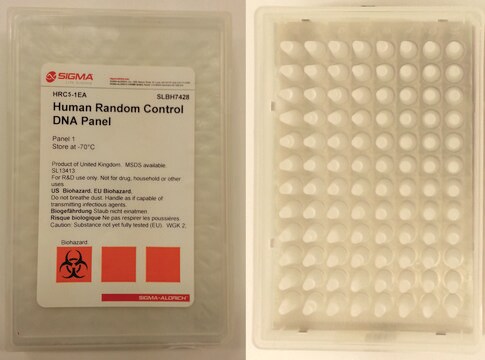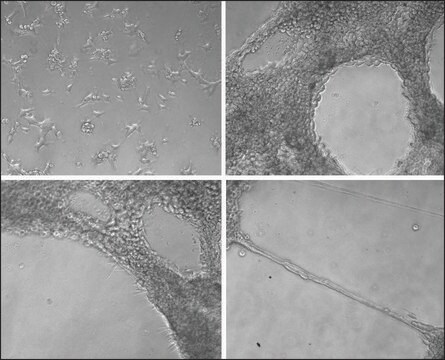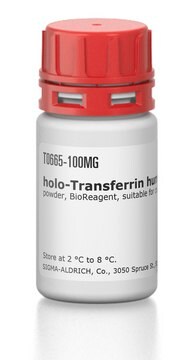HRC1
Human Random Control DNA Panel
Panel 1
About This Item
Prodotti consigliati
Livello qualitativo
Forma fisica
liquid
Concentrazione
100 ng/μL
Colore
colorless
Condizioni di spedizione
dry ice
Temperatura di conservazione
−70°C
Cerchi prodotti simili? Visita Guida al confronto tra prodotti
Categorie correlate
Applicazioni
The range of Human Random Control (HRC) DNA samples represents a control population of 480 UK Caucasian blood donors. The HRC DNA is extracted from lymphoblastoid cell lines derived by Epstein Barr Virus (EBV) that can be continuously propagated in culture. This ensures an infinite supply of the unvarying DNA panels. The composition of each panel is completely defined and standardized so that each lot will be identical. Therefore, the HRC DNA Panels can be used as Reference Standards as routine quality control in the laboratory.
The purified HRC DNA is available in 5 different panels (HRC 1 through 5) consisting of 96 individuals with 2 μg each at a concentration of 100 ng/μL. The DNA is dissolved in 10 mM Tris (pH 8) 1 mM EDTA.
For ordering purposes, the 96-well plate format is listed as a 1 EACH (1EA) package size.
Avvertenze
Warning
Indicazioni di pericolo
Consigli di prudenza
Classi di pericolo
Eye Irrit. 2
Codice della classe di stoccaggio
11 - Combustible Solids
Classe di pericolosità dell'acqua (WGK)
WGK 2
Certificati d'analisi (COA)
Cerca il Certificati d'analisi (COA) digitando il numero di lotto/batch corrispondente. I numeri di lotto o di batch sono stampati sull'etichetta dei prodotti dopo la parola ‘Lotto’ o ‘Batch’.
Possiedi già questo prodotto?
I documenti relativi ai prodotti acquistati recentemente sono disponibili nell’Archivio dei documenti.
I clienti hanno visto anche
Articoli
DNA, RNA, cDNA derived from ECACC mammalian cell lines allow screening for genes or expression patterns to identify lines most suitable for specific research.
Il team dei nostri ricercatori vanta grande esperienza in tutte le aree della ricerca quali Life Science, scienza dei materiali, sintesi chimica, cromatografia, discipline analitiche, ecc..
Contatta l'Assistenza Tecnica.










